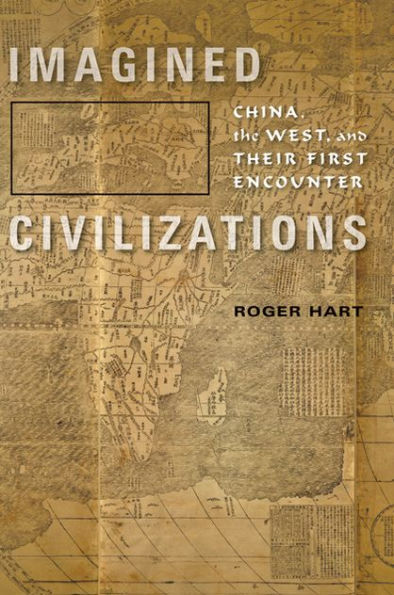Accounts of the seventeenth-century Jesuit Mission to China have often celebrated it as the great encounter of two civilizations. The Jesuits portrayed themselves as wise men from the West who used mathematics and science in service of their mission. Chinese literati-official Xu Guangqi (1562–1633), who collaborated with the Italian Jesuit Matteo Ricci (1552–1610) to translate Euclid’s Elements into Chinese, reportedly recognized the superiority of Western mathematics and science and converted to Christianity. Most narratives relegate Xu and the Chinese to subsidiary roles as the Jesuits' translators, followers, and converts. Imagined Civilizations tells the story from the Chinese point of view.
Using Chinese primary sources, Roger Hart focuses in particular on Xu, who was in a position of considerable power over Ricci. The result is a perspective startlingly different from that found in previous studies. Hart analyzes Chinese mathematical treatises of the period, revealing that Xu and his collaborators could not have believed their declaration of the superiority of Western mathematics. Imagined Civilizations explains how Xu’s West served as a crucial resource. While the Jesuits claimed Xu as a convert, he presented the Jesuits as men from afar who had traveled from the West to China to serve the emperor.
Accounts of the seventeenth-century Jesuit Mission to China have often celebrated it as the great encounter of two civilizations. The Jesuits portrayed themselves as wise men from the West who used mathematics and science in service of their mission. Chinese literati-official Xu Guangqi (1562–1633), who collaborated with the Italian Jesuit Matteo Ricci (1552–1610) to translate Euclid’s Elements into Chinese, reportedly recognized the superiority of Western mathematics and science and converted to Christianity. Most narratives relegate Xu and the Chinese to subsidiary roles as the Jesuits' translators, followers, and converts. Imagined Civilizations tells the story from the Chinese point of view.
Using Chinese primary sources, Roger Hart focuses in particular on Xu, who was in a position of considerable power over Ricci. The result is a perspective startlingly different from that found in previous studies. Hart analyzes Chinese mathematical treatises of the period, revealing that Xu and his collaborators could not have believed their declaration of the superiority of Western mathematics. Imagined Civilizations explains how Xu’s West served as a crucial resource. While the Jesuits claimed Xu as a convert, he presented the Jesuits as men from afar who had traveled from the West to China to serve the emperor.

Imagined Civilizations: China, the West, and Their First Encounter
384
Imagined Civilizations: China, the West, and Their First Encounter
384
Product Details
| ISBN-13: | 9781421406060 |
|---|---|
| Publisher: | Johns Hopkins University Press |
| Publication date: | 08/15/2013 |
| Pages: | 384 |
| Product dimensions: | 6.12(w) x 9.25(h) x 1.15(d) |
| Age Range: | 18 Years |
